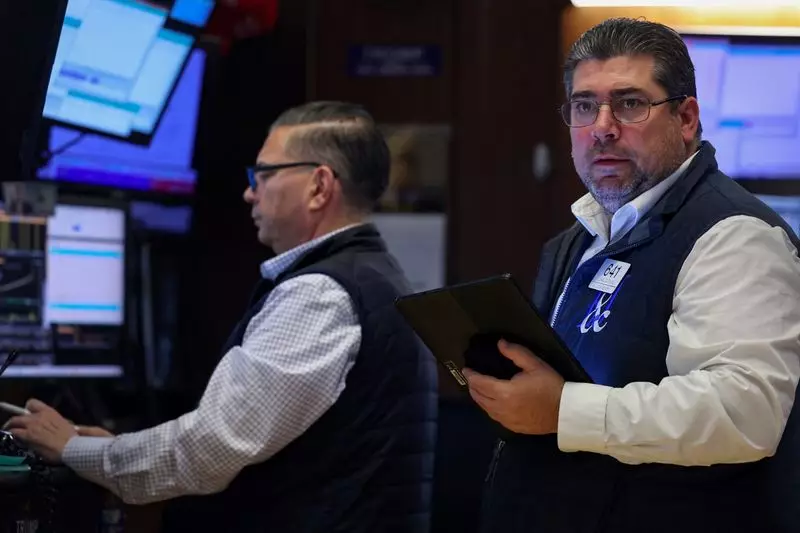On a relatively volatile trading day, Wall Street witnessed a notable uptick in stock prices, primarily led by significant rebounds in the technology sector. The S&P 500 and the Nasdaq Composite indices both experienced increases, buoyed by strong performances from major tech companies. Tech giants like Microsoft and Apple played pivotal roles in driving the market higher, signaling continued investor confidence in technology-related stocks, even as broader economic uncertainties loomed. This duality of growth in tech against a backdrop of potential trade turbulence underscores a tightrope walk that investors are currently navigating.
A crucial element influencing market behavior was the release of the Federal Reserve’s minutes from a recent meeting held on November 6-7. These minutes revealed divisions among Fed officials regarding the direction of interest rates, suggesting a cautious stance as they gauge economic conditions. While some analysts interpret this as a precursor to potential rate cuts, emphasizing the need for further data, others express skepticism, cautioning that this uncertainty may stall meaningful policy adjustments.
Jamie Cox of Harris Financial Group voiced a sentiment that resonated with many investors, suggesting that a reduction in policy rates might be imminent. In contrast, Capital Economics’ Paul Ashworth highlighted a more reserved outlook, underscoring the importance of upcoming employment and inflation data before cementing rate cut expectations. Such disparity in expert opinion adds layers of complexity to investment strategies as traders await crucial economic indicators that could steer the Fed’s decision-making process.
Adding to the market’s intrigue were President-elect Donald Trump’s recent statements regarding imposing tariffs on imports from Canada, Mexico, and China. His proposed 25% conditional tariff on North American imports raised alarms among investors, especially in companies like Ford and General Motors, which rely heavily on cross-border supply chains. The drop in these automotive giants’ stocks serves as a cautionary tale, highlighting how swiftly investor confidence can erode due to geopolitical developments.
The specter of trade wars is particularly unsettling. Trump’s assertions of an additional 10% tariff on Chinese imports signal a potential escalation in trade tensions, which could ripple through various sectors. The hesitance among investors can be seen as they recalibrate their expectations, weighing short-term gains against long-term uncertainties in an ever-evolving geopolitical landscape.
The broader market indices reflected the multifaceted currents at play, with the Dow Jones Industrial Average rising by 123.74 points to settle at 44,860.31. Conversely, despite the S&P 500 inching up to 6,021.63—a notable record high—the Russell 2000 index fell 0.7%. This divergence speaks to the selective nature of investor optimism, favoring larger tech firms while leaving smaller companies in the dust.
Interestingly, the stock market’s dynamics became evident as declining issues overwhelmed advancers on the NYSE at a ratio of 1.57-to-1, revealing a cautious sentiment creeping into the market. The S&P 500 may have marked substantial highs, but the overall volatility underneath suggests that not all sectors are basking in the glow of market gains.
As Wall Street tries to find its footing amid tariffs and Federal Reserve policy ambiguity, it is clear that investors are in a state of flux, constantly adjusting their positions in an attempt to navigate through these turbulent waters. The upcoming economic indicators will be pivotal in shaping market sentiment and determining the trajectory for interest rates.
While there are pockets of strength within the market, the confluence of trade tensions and divided opinions on monetary policy indicates a challenging road ahead. Investors are tasked with balancing the lure of potential gains against the pressing need for vigilance in the face of potential economic headwinds. This intricate balance will define trading strategies in the short term as stakeholders prepare for what lies ahead.

